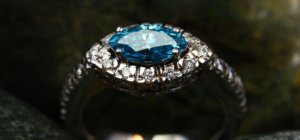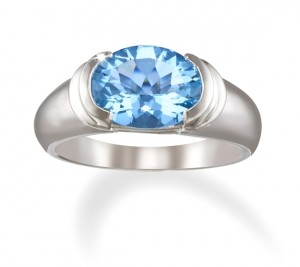 Have you ever wondered how jewelry is made? The multiple processes that go into bringing a piece of jewelry from the realm of ideas into the showcase are as complex as the jewelry itself. Technological advances have had a huge impact on jewelry manufacturing. Read on to discover more about the fascinating world of jewelry manufacturing.
Have you ever wondered how jewelry is made? The multiple processes that go into bringing a piece of jewelry from the realm of ideas into the showcase are as complex as the jewelry itself. Technological advances have had a huge impact on jewelry manufacturing. Read on to discover more about the fascinating world of jewelry manufacturing.
How is Jewelry designed?
Jewelry begins with a design. Often, this means a sketch or a painting called a rendering. Today, a designer is just as likely to use a computer aided design program to create a jewelry design rendering. “Counter sketching” was a term used for the quick drawings a designer would do based on a customer’s description of the jewelry they wanted to have made. Now, a designer is just as likely to import a graphic file into a CAD program to create a rendering.
how is a custom jewelry piece molded?
Once the rendering is approved, the next step is to create a prototype called a model. The model can be made of metal, plastic, or wax and is a three-dimensional representation of the finished piece. A model can be made by hand by a skilled individual called a model maker or it can be done by a robotic device called a rapid prototyping machine. A rapid prototyping machine works similarly to a printer, only it uses a soluble and non-soluble material to build up a model layer by layer. The soluble material gives structure to the model and fills in the negative space while the other material, usually a type of plastic creates the physical structure.
When the model is complete, a mold is usually made. The mold allows the piece to be reproduced many times over. If the production volume is large, many molds are made. A jewelry caster will use the mold to inject hot liquid wax. The wax cools and is removed from the mold carefully. Multiple waxes can be joined to a central core called a sprue. When many waxes area attached to a single central core, this configuration is referred to as a “tree” because the individual waxes resemble the branches of a tree radiating from the central line.
The tree is immersed in a ceramic-like substance called investment. The investment hardens, and is gradually heated so the wax flows out. The hard ceramic shell is then prepared to accept molten metal in place of the wax. This process is called casting. Metal is heated to the molten state and is forced into the investment sometimes by centrifugal force or by electric currents in a process called induction melting. After casting, the investment is removed and the cast pieces are clipped from the tree.
A jewelry technician will remove the sprues by cutting and filing so that no traces of the casting process can be seen. Sometimes faint lines where the two halves of the mold come together are visible, and these are also removed. Preparing the casting involves removing the outmost layer of metal with abrasive compounds so that the metal can reveal its luster. This process is called finishing. Finishing can be done in large groups by machines called tumblers or by hand with fine sandpaper. Once the finishing is complete, the rough casting begins to resemble a piece of jewelry. If the casting has settings for gemstone, it is referred to as a mounting at this point.

The mounting can be pre-polished with an abrasive compound called tripoli before the stones are set. A pre-polished mounting will be shiny but will not have the full luster of a finished piece. It is common for most of the finishing work to be completed before stone setting so that risk of damage to the stones by excessive handling is minimized. After the stones are set, the jewelry will be final polished. Compounds used in final polish are not abrasive, but bring out the lustrous qualities of the metal. Final polish compounds such as red or green rouge are commonly used.
After final polish, the jewelry is inspected carefully for any defects such as porosity in the casting or loose stones. This process is called quality control. Each jeweler will have their own standards for quality control. Acceptable criteria will vary from manufacturer to manufacturer. Once a piece of jewelry is approved by quality control, it is packaged or put on display. When you look at a piece of jewelry, are you surprised by how much work is behind it? Does this make you appreciate your jewelry even more, knowing what goes into its creation? Let us know with your comments.
